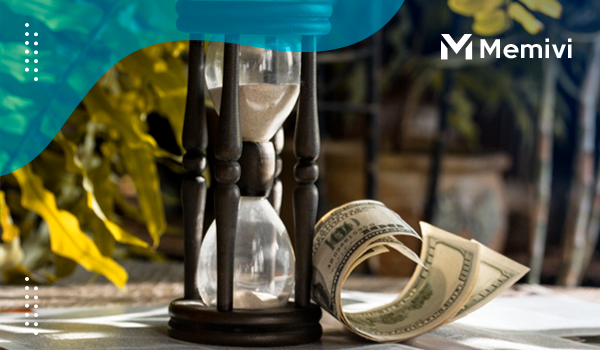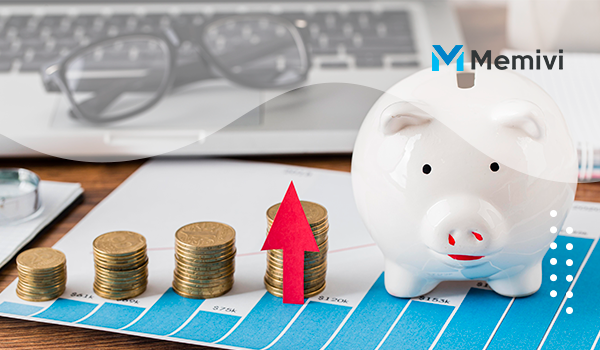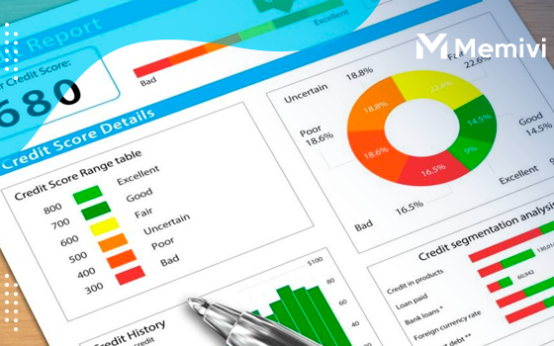
Saving money is a crucial endeavor for anyone aiming to safeguard their financial future. High-yield savings accounts present an excellent opportunity for individuals seeking to garner a superior interest rate on their savings while maintaining accessibility to their funds.
These accounts typically proffer interest rates that surpass those of traditional savings accounts, rendering them an exceptional choice for those striving to optimize their savings. In this article, we will explore the foremost high-yield savings accounts, their advantages, and the factors necessitating consideration when selecting the most suitable option for you.
By the conclusion of this discourse, you will possess all the requisite knowledge and tools to designate the optimal high-yield savings account tailored to your requirements.
Understanding high-yield accounts and how they work
High-yield accounts have surged in popularity among savers seeking to optimize their savings. However, what precisely do high-yield accounts entail, and how do they operate? Put simply, a high-yield account is a variant of a savings account that boasts a superior interest rate compared to traditional savings accounts. This translates to accelerated growth of your funds, enabling you to accrue more interest over time.
The mechanics of high-yield accounts are relatively straightforward. When you deposit funds into a high-yield account, the financial institution utilizes your money to invest in a variety of financial instruments such as government bonds, corporate bonds, or other low-risk investments. The returns yielded from these investments are subsequently passed on to you in the form of elevated interest rates.
A paramount advantage of high-yield accounts is their provision of a secure and reliable means to expand your savings. Typically offered by esteemed financial institutions, these accounts are insured by either the Federal Deposit Insurance Corporation (FDIC) or the National Credit Union Administration (NCUA), affording protection for your funds up to a specified limit. It is imperative to acknowledge that high-yield accounts may entail certain requirements or constraints.
For instance, certain accounts might mandate a minimum deposit or necessitate the maintenance of a specific balance to avail of the enhanced interest rate. Moreover, there may exist restrictions on the frequency of transactions or withdrawals permissible each month. Nonetheless, the merits of high-yield accounts remain indisputable.By understanding how they work and taking advantage of their higher interest rates, you can make significant strides in maximizing your savings and achieving your financial goals.
Different types of high-yield accounts available
When it comes to maximizing your savings, high-yield accounts can be a game-changer. These accounts offer higher interest rates compared to traditional savings accounts, allowing your money to grow faster over time. However, it’s important to understand the different types of high-yield accounts available to make an informed decision.
- High-Yield Savings Accounts: High-yield savings accounts are the most common type of high-yield account. These accounts are typically offered by online banks and credit unions, and they offer higher interest rates than brick-and-mortar banks. With a high-yield savings account, you can earn interest on your deposited funds while maintaining easy access to your money.
- High-Yield Money Market Accounts: Money market accounts are another option for earning higher interest on your savings. These accounts often require a higher minimum deposit compared to high-yield savings accounts, but they also offer additional features such as check-writing privileges. Money market accounts may be a suitable choice if you want a slightly higher interest rate and more flexibility in accessing your funds.
- High-Yield Certificates of Deposit (CDs): Certificates of Deposit, or CDs, are fixed-term accounts that offer higher interest rates than regular savings accounts. With a high-yield CD, you deposit a specific amount of money for a predetermined period of time, typically ranging from a few months to several years. While CDs generally offer higher interest rates, keep in mind that your money will be locked in for the duration of the term, and early withdrawals may result in penalties.
- High-Yield Checking Accounts: High-yield checking accounts combine the benefits of a checking account with the higher interest rates of a high-yield account. These accounts often require certain conditions to be met, such as maintaining a minimum balance or setting up direct deposits. With a high-yield checking account, you can earn interest on your everyday spending money while enjoying the convenience of a checking account.
Before choosing a high-yield account, consider your financial goals, liquidity needs, and the terms and conditions associated with each account. It’s also important to compare interest rates, fees, and account features offered by different financial institutions. By understanding the different types of high-yield accounts available, you can make an informed decision that will help you maximize your savings and achieve your financial goals.
Tips for opening and managing a high-yield account

When it comes to maximizing your savings, opening and managing a high-yield account can be a game-changer. These accounts offer higher interest rates than traditional savings accounts, allowing your money to grow at an accelerated pace. To make the most of these accounts, here are some essential tips to consider.
Firstly, research and compare different high-yield account options.
Not all high-yield accounts are created equal, so it’s crucial to do your due diligence. Look for reputable banks or financial institutions that offer competitive interest rates and favorable terms. Take into account factors such as minimum deposit requirements, monthly fees, and withdrawal restrictions. By finding the right account that aligns with your financial goals and preferences, you can set a solid foundation for your savings journey.
Next, consider setting up automatic transfers into your high-yield account. By automating your savings, you ensure a consistent and disciplined approach to depositing money into your account.
Set a specific amount or percentage to transfer from your regular checking account into your high-yield account regularly. This way, you won’t have to rely on remembering to make deposits manually, making it easier to stay on track towards your savings goals.
Another important consideration is to regularly review and compare interest rates. The financial landscape is dynamic, and interest rates can change over time. Stay informed about any changes in interest rates offered by your high-yield account provider and compare them to other options in the market.
If you find that another institution is offering a significantly higher rate, consider transferring your funds to take advantage of the better return on your savings.
Maximizing your savings with additional strategies
While high-yield savings accounts can indeed facilitate effective money growth, there exist supplementary strategies to further enhance your savings potential. These tactics can furnish an additional impetus to your financial aspirations, expediting the achievement of your savings objectives.
One efficacious strategy involves automating your savings. Establish automated transfers from your regular checking account to your high-yield savings account at regular intervals. By automating your savings, you eliminate the temptation to expend those funds and ensure that a portion of your earnings is channeled directly toward your savings endeavors. This not only fosters consistency but also capitalizes on the compounding interest phenomenon over time.
Another strategy worth contemplating is the regular review of your expenditures to pinpoint areas where cutbacks can be made. Scrutinize your monthly budget and identify any superfluous or extravagant expenses.
By curbing your outlays, you can liberate additional funds to contribute to your high-yield savings account. While this may entail some short-term sacrifices, the long-term dividends of bolstering your savings will undoubtedly justify the effort.
Final Thoughts
We hope you found our blog post on maximizing your savings by unveiling the best high-yield accounts informative and helpful. Saving money is an essential part of financial planning, and finding the right high-yield account can make a significant difference in growing your savings.
By following the tips and suggestions provided in this article, you can make an informed decision and ensure your money is working harder for you. Remember, every dollar saved is a step closer to achieving your financial goals. Start exploring high-yield accounts today and watch your savings flourish!


 Best Allowance and Chore App for Kids <p class='sec-title' style='line-height: normal; font-weight: normal;font-size: 16px !important; text-align: left;margin-top: 8px;margin-bottom: 0px !important;'> As parents, we all know how challenging it can be to teach our children the value of money and how to manage it effectively. </p>
Best Allowance and Chore App for Kids <p class='sec-title' style='line-height: normal; font-weight: normal;font-size: 16px !important; text-align: left;margin-top: 8px;margin-bottom: 0px !important;'> As parents, we all know how challenging it can be to teach our children the value of money and how to manage it effectively. </p>  Victory for Consumers as All Three Credit Bureaus Now Offer Weekly Free Report Access <p class='sec-title' style='line-height: normal; font-weight: normal;font-size: 16px !important; text-align: left;margin-top: 8px;margin-bottom: 0px !important;'> In a victory for consumers everywhere, all three credit bureaus have announced that they will now offer free weekly credit reports. </p>
Victory for Consumers as All Three Credit Bureaus Now Offer Weekly Free Report Access <p class='sec-title' style='line-height: normal; font-weight: normal;font-size: 16px !important; text-align: left;margin-top: 8px;margin-bottom: 0px !important;'> In a victory for consumers everywhere, all three credit bureaus have announced that they will now offer free weekly credit reports. </p>  Revolutionizing Comfort: The Best HVAC Software of 2024 <p class='sec-title' style='line-height: normal; font-weight: normal;font-size: 16px !important; text-align: left;margin-top: 8px;margin-bottom: 0px !important;'> As technology advances, it's becoming increasingly more important to use software that can help streamline your business and keep you competitive. </p>
Revolutionizing Comfort: The Best HVAC Software of 2024 <p class='sec-title' style='line-height: normal; font-weight: normal;font-size: 16px !important; text-align: left;margin-top: 8px;margin-bottom: 0px !important;'> As technology advances, it's becoming increasingly more important to use software that can help streamline your business and keep you competitive. </p>